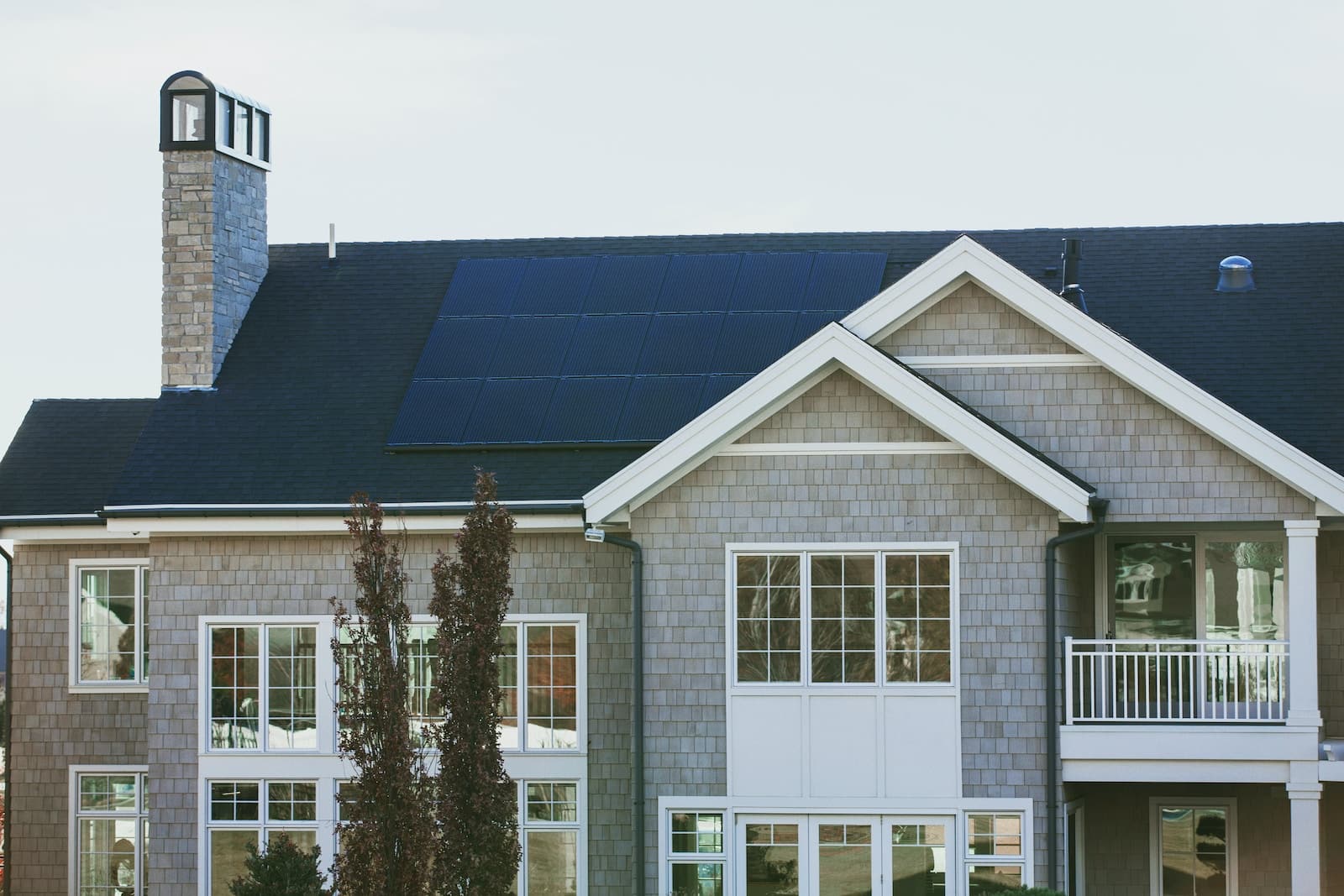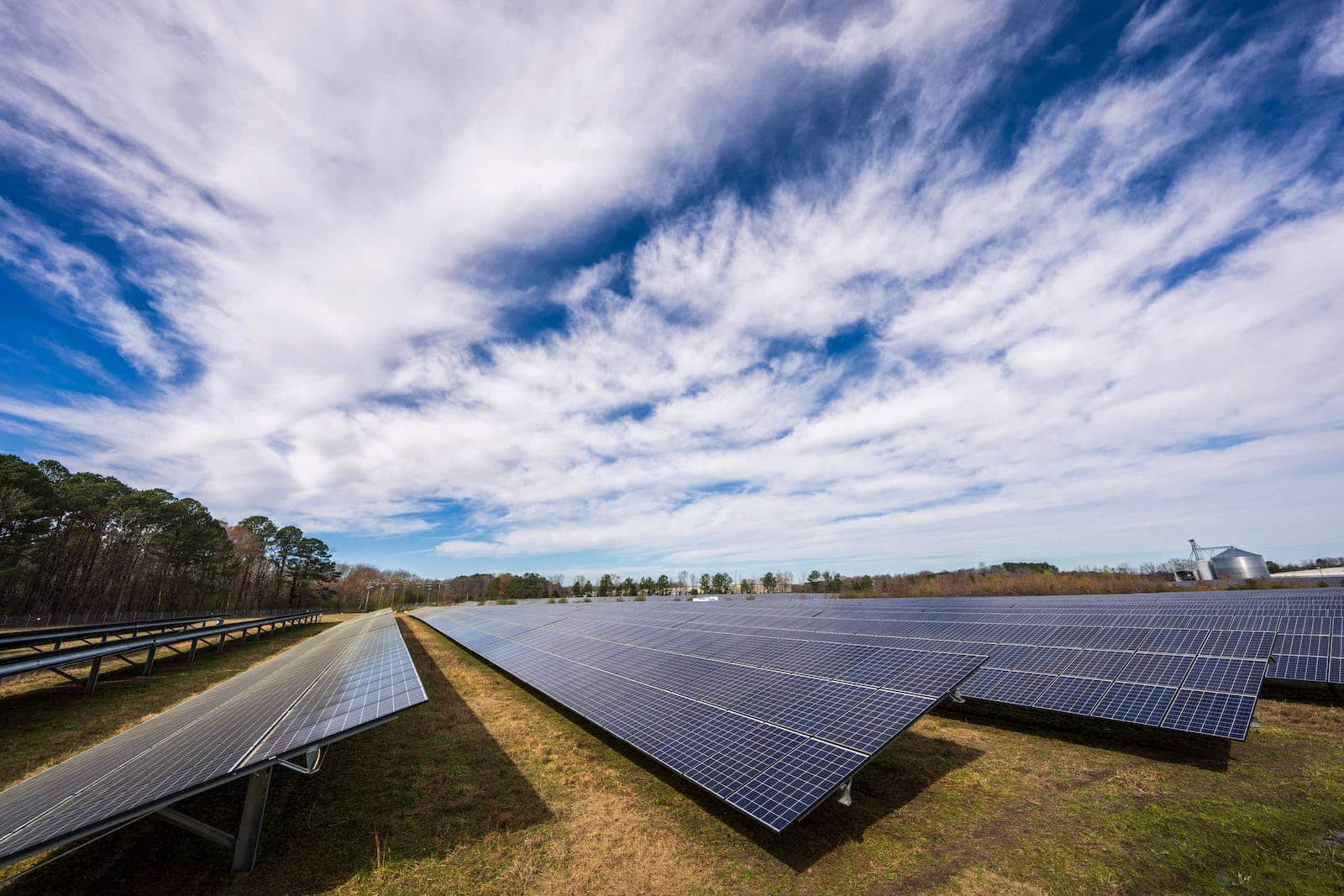Wondering how to do solar panels work? They convert sunlight into electricity using photovoltaic cells. This article will explain the process, components, and efficiency factors involved in solar energy.
Key Takeaways
- Solar panels convert sunlight into DC electricity using photovoltaic cells made primarily from silicon, allowing for clean and sustainable energy generation.
- The efficiency of solar panels depends on sun exposure and proper installation, with excess electricity eligible for net metering, providing homeowners with financial benefits.
- Adopting solar energy significantly reduces greenhouse gas emissions and improves air quality, contributing to a healthier environment and supporting sustainability efforts.
Introduction
Solar energy, the most abundant source of energy on Earth, offers a clean and renewable way to generate electricity. But how do solar panels work? At their core, solar panels convert sunlight into direct current (DC) electricity, harnessing the sun’s energy to power our homes and businesses. This process relies on photovoltaic (PV) cells, which are the building blocks of how solar power work.
Photovoltaic cells are made primarily from silicon, a semiconductor material that plays a crucial role in generating electricity. When sunlight hits these cells, it creates electrical charges that flow due to an internal electric field. This movement of electrons produces DC electricity, which can then be used directly or stored for later use.
Solar panels are grouped into arrays to enhance their ability to capture sunlight and maximize energy generation. These arrays are typically installed on rooftops or open fields, where they can absorb the maximum amount of sunlight throughout the day.
By 2035, solar energy could power 40% of the nation’s electricity, underscoring its importance in the future of energy. The energy produced from sunlight and the sun’s energy can be utilized for electricity generation or stored in batteries and solar thermal systems, ensuring a steady and reliable power supply.
This shift towards solar power not only reduces our reliance on fossil fuels but also promotes a cleaner and healthier environment.
The Basics of Solar Panels
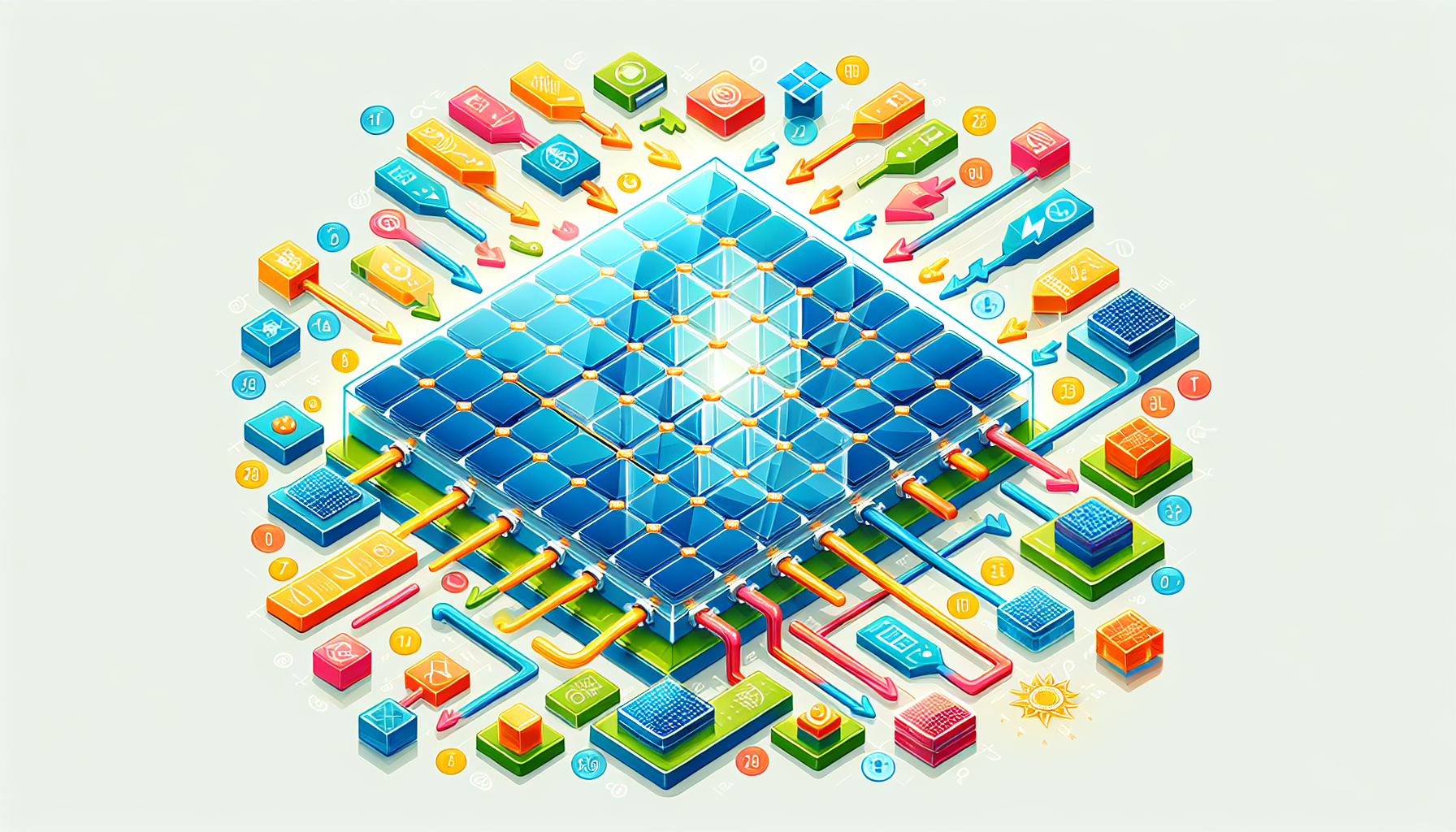
Solar panels function by converting sunlight into direct current (DC) electricity, a process that is particularly effective during daylight hours when energy demand is highest. These pv solar panels are composed of multiple photovoltaic (PV) cells and a solar cell, which together form a complete system known as a solar array. Each PV cell is made from silicon, a key material in photovoltaic technology.
The construction of solar panels involves several layers, including a glass casing, metal frame, special film, and wiring, all of which protect and support the silicon cells. When sunlight hits the surface of these cells, photons from the sun knock electrons loose, creating an electric current. This current is then harnessed and used to generate electricity for homes and businesses.
Photovoltaic technology is the most common form of solar technology used in residential applications due to its efficiency and reliability. Installing solar panels allows homeowners to produce clean and sustainable energy, reducing reliance on the grid and lowering electricity bills.
The Photovoltaic Effect
The photovoltaic effect is the fundamental principle behind how solar panels generate electricity. Photons from the sun strike a photovoltaic cell. This process causes electrons to be knocked loose from their atoms. This movement of electrons creates an electric current, which flows due to an internal electric field formed by two layers of silicon with opposite charges.
Silicon, the predominant material used in photovoltaic cells, absorbs sunlight and converts it into electrical energy. This process is highly efficient, allowing solar panels to capture sunlight and generate electricity even on cloudy days, although with reduced efficiency. Multijunction solar cells, which use multiple layers of semiconductors, can capture a broader range of the solar spectrum, leading to higher efficiency.
The photovoltaic effect is a clean and renewable way to generate electricity, contributing to the reduction of greenhouse gas emissions and promoting sustainable energy practices. Understanding this effect helps us appreciate the technology behind solar panels and their role in our energy future.
Components of a Solar Panel System
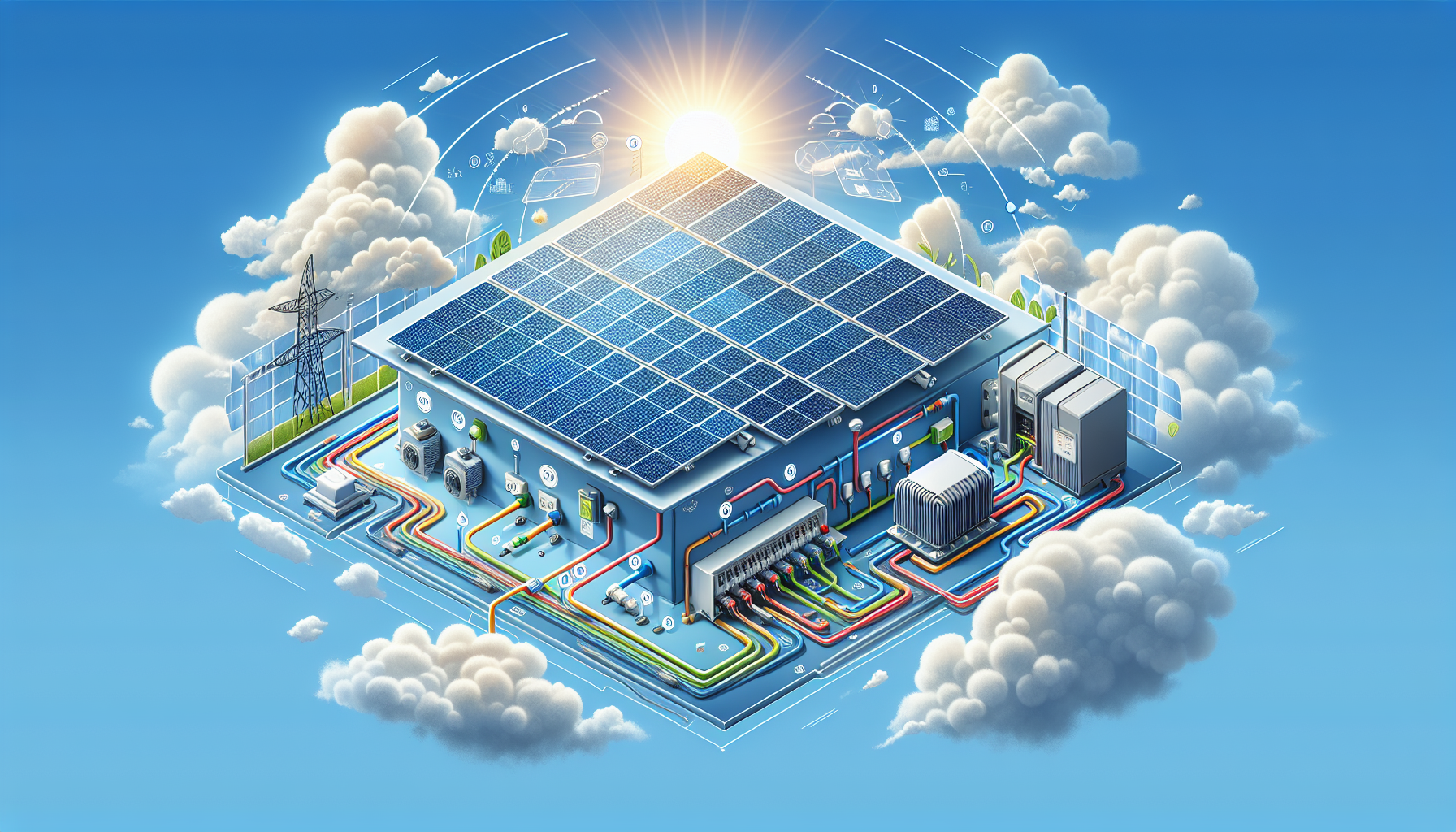
A complete solar panel system consists of several key components that work together to generate and utilize solar energy. The primary component is the solar panels themselves, which are made up of multiple solar cells. These panels are grouped into arrays to maximize sunlight capture and energy generation.
Inverters convert the DC electricity generated by the panels into AC electricity, which is used by most household appliances. Micro-inverters can optimize the performance of individual panels, ensuring that issues with one panel do not affect the entire system.
Mounting systems secure the panels to roofs or ground mounts, providing optimal positioning for sunlight absorption. Additionally, solar batteries are used to store excess energy produced during the day, enabling use during nighttime or grid outages. Charge controllers regulate the electricity flow from the panels to the batteries, ensuring optimal charging and prolonging battery lifespan.
Finally, disconnect switches allow the solar system to be safely shut down for maintenance or repairs.
Conversion from DC to AC Electricity
Solar panels generate DC electricity, but most household appliances and the electrical grid use AC electricity. Therefore, an inverter is necessary to convert DC to AC electricity, making the energy usable for everyday purposes. Modern inverters are highly efficient, using solid-state transistors to rapidly switch the direction of the DC input, creating an AC output.
After conversion, the AC electricity flows through the electrical panel. This process powers household appliances and integrates solar energy into the home seamlessly. This conversion process is essential for maximizing the utility of the electricity generated by solar panels and ensuring compatibility with the existing electrical infrastructure.
Sun Exposure and Efficiency
Sun exposure is a critical factor in the efficiency of solar panels. Solar radiation varies by location, affecting the amount of energy that can be captured and converted into electricity. However, solar panels can still generate electricity on cloudy days, although their efficiency may drop by 10 to 25 percent or more.
The efficiency of solar panels is also influenced by the quality, size, number, and location of the panels. Proper installation and positioning can significantly enhance their performance, allowing homeowners to maximize their energy production and reduce their reliance on the grid.
Excess Electricity and Net Metering
Excess electricity generated by solar panels can be fed back into the grid electricity, allowing homeowners to receive credits for this energy. This process, known as net metering, involves measuring the electricity flowing to and from the home and providing credits for surplus power sent back to the grid.
Net metering offers significant financial benefits by offsetting energy costs and allowing homeowners to earn credits or payments for the excess electricity they produce. This system not only makes solar energy more affordable but also encourages the adoption of renewable energy sources.
Financial Benefits of Installing Solar Panels
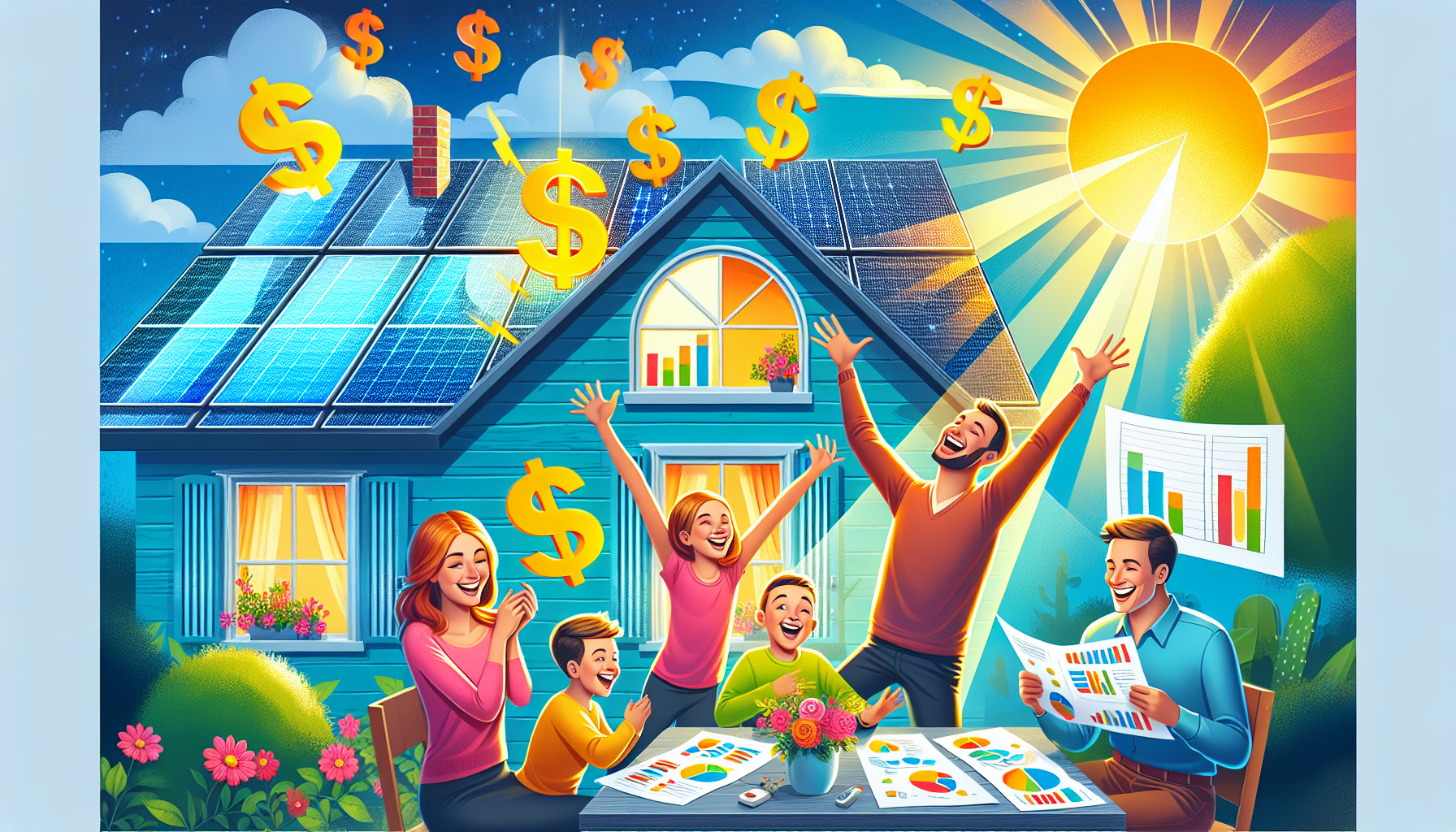
Installing solar panels offers numerous financial benefits, starting with significant reductions in monthly electricity bills. By generating their own electricity, homeowners can install solar panels to reduce their reliance on the grid and save money on their utility expenses.
In addition to lower electricity bills, solar panels increase property value, making homes more attractive to buyers looking for energy-efficient properties. Federal and state incentives, such as the 30% investment tax credit (ITC) and various rebates, further reduce the initial cost of solar panel installations.
Performance-based incentives also reward homeowners financially based on the actual energy their solar panels produce. Net metering allows homeowners to earn credits or payments for surplus electricity generated by their solar systems, further offsetting their energy costs and enhancing the financial appeal of solar energy.
Environmental Impact of Solar Panels

Solar panels have a profound positive impact on the environment. Utilizing solar energy can significantly reduce greenhouse gas emissions, including carbon dioxide, compared to traditional fossil fuel energy generation. This reduction in emissions plays a crucial role in combating climate change and promoting a sustainable future.
In addition to reducing greenhouse gases, solar energy improves air quality by decreasing reliance on fossil fuels, leading to fewer health issues related to respiratory and cardiovascular diseases. Solar power systems also consume less water compared to traditional energy production methods, conserving this vital resource.
The adoption of solar energy can provide various ecosystem services, including carbon sequestration and stormwater management, contributing to overall environmental health and resilience. By 2035, solar energy could help the U.S. achieve a carbon-free electricity grid, a crucial step toward sustainable energy development.
Types of Solar Panel Installations
There are several types of solar panel installations to suit different needs and settings. Residential solar installations involve mounting solar panels on rooftops or in backyards, providing homeowners with a reliable source of renewable energy.
Commercial solar systems vary in size and cater to businesses of all scales, from small gas stations to large manufacturing facilities. Utility-scale solar projects consist of extensive arrays with hundreds of thousands of solar panels generating power for wide areas. These installations typically range from 25 MWac to 1,000 MWac in size and serve many residential and commercial customers.
Community solar projects offer shared solar energy from a large array to customers who cannot install their own systems, making solar energy accessible to more people. Virtual net metering enables homeowners to benefit from off-site solar installations, allowing them to participate in community solar programs and access renewable energy without installing panels on their own property.
Maintenance and Longevity of Solar Panels
Solar panels are designed to be low-maintenance and have a long lifespan. Typically, they require minimal upkeep, primarily involving periodic checks and cleaning to ensure optimal performance. Monitoring systems can help detect declines in solar panel productivity, prompting timely maintenance to keep the solar energy systems running efficiently.
Professional cleaning services are recommended if the panels accumulate dirt or debris that affects their efficiency. The energy payback time for solar panels is decreasing, with some panels producing sufficient clean electricity within less than one year of operation. This efficiency, combined with low maintenance requirements, contributes to the longevity and effectiveness of solar panel systems.
How to Get Started with Solar Panels
Getting started with solar panels involves researching available incentives and consulting with solar companies for installation details. The Federal Investment Tax Credit (ITC) can significantly reduce the initial cost of solar panel installation, making it more affordable for homeowners.
Consulting with reputable solar companies ensures a smooth installation process and provides guidance on maintenance and maximizing energy production. Taking these steps allows homeowners to transition to renewable energy and enjoy the financial and environmental benefits of solar panels.
Summary
In summary, solar panels offer a powerful and sustainable way to generate electricity, reduce energy costs, and minimize environmental impact. Understanding how solar panels work, from the photovoltaic effect to the components of a solar panel system, is essential for making informed decisions about solar energy.
With numerous financial benefits, including tax incentives and net metering, and significant positive effects on the environment, solar panels are a smart investment for the future. We encourage you to consider installing solar panels to harness the sun’s energy and contribute to a cleaner, greener world.
Frequently Asked Questions
What is the primary function of solar panels?
The primary function of solar panels is to convert sunlight into direct current (DC) electricity, enabling the generation of renewable energy for various applications.
How do solar panels contribute to reducing electricity bills?
Solar panels significantly lower electricity bills by generating your own energy, which decreases dependence on the grid. This self-sufficiency not only reduces costs but can also provide savings over time.
What are the common types of solar panels?
The common types of solar panels include monocrystalline, polycrystalline, and thin-film panels. Each type has distinct characteristics and efficiencies suited for different applications.
What happens to excess electricity produced by solar panels?
Excess electricity produced by solar panels can be fed back into the local electricity grid or stored in battery systems for future use. This allows you to maximize the benefits of your solar energy system.
What financial benefits do solar panels provide to homeowners?
Solar panels significantly reduce electricity bills and can increase your property value, while also providing tax incentives and the opportunity to earn from surplus electricity. Investing in solar energy also protects you against rising energy costs in the long run.


